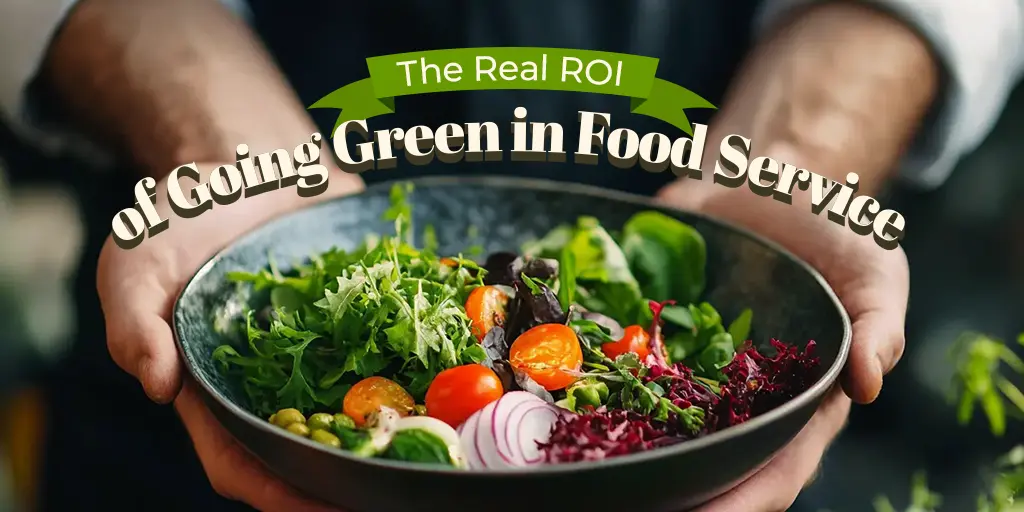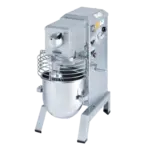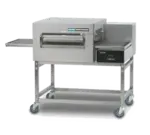
The Real ROI of Going Green in Food Service
- Designing with Sustainability in Mind
- Eco-Friendly Packaging and Take-Out Solutions
- Building a Green Kitchen
- Implementing Zero-Waste Practices
- Green Marketing: Leveraging Sustainability for Business Growth
- Employee Engagement in Sustainability
- Partnering with Green Suppliers
- Long-Term Benefits of Going Green
- Conclusion: The Lasting Impact of Going Green
Designing with Sustainability in Mind
Designing a sustainable restaurant begins with the construction phase. By selecting environmentally friendly materials and building techniques, restaurants can significantly reduce their environmental footprint. Using recycled or locally sourced materials for furniture and fixtures, installing energy-efficient heating and cooling systems, and opting for natural lighting can make a huge difference. For example, utilizing low-VOC paints and sustainable wood flooring can create a healthier, eco-friendly dining environment while minimizing toxic emissions that can affect indoor air quality.
Moreover, incorporating green architecture such as rooftop gardens or green walls not only improves aesthetics but also provides additional environmental benefits. Rooftop gardens, for example, can be used for growing herbs and vegetables, reducing the need for external sourcing and ensuring that customers enjoy fresh, organic ingredients straight from the restaurant’s roof.
Eco-Friendly Packaging and Take-Out Solutions
Packaging waste has become a significant environmental concern, especially in the context of fast-casual dining and take-out services. Eco-friendly packaging is a crucial step for restaurants looking to reduce their carbon footprint. Switching from plastic containers to biodegradable, recyclable, or compostable materials can make a significant difference. Restaurants can also consider encouraging customers to bring their own reusable containers or offering discounts for those who do.
Another way to promote sustainability in food packaging is by integrating plant-based packaging materials, such as sugarcane, cornstarch, or bamboo. These materials are compostable, renewable, and break down quickly without leaving harmful residue in the environment. Implementing these changes may require an initial investment in new packaging supplies, but the long-term environmental and branding benefits make it a worthwhile effort.
Building a Green Kitchen
The kitchen is at the heart of a restaurant’s operation, and making it eco-friendly can lead to substantial energy savings and a reduction in waste. Adopting green kitchen practices starts with replacing energy-hungry equipment with energy-efficient alternatives. Modern ovens, dishwashers, fryers, and refrigerators that meet Energy Star ratings consume significantly less power while maintaining the same level of performance.
In addition to energy-efficient equipment, optimizing kitchen workflows to minimize energy waste is crucial. This could involve turning off equipment when not in use, ensuring that fridges and freezers are at the optimal temperature, and regular maintenance of equipment to ensure it runs efficiently. These small changes can lead to significant reductions in energy costs over time, thus improving the restaurant’s overall ROI.
Furthermore, water conservation in the kitchen is just as important. Installing low-flow faucets and dishwashers that use less water per cycle can help significantly reduce water usage. Restaurants can also reuse water where possible, such as using water from dishwashers for cleaning floors or vegetables.
Implementing Zero-Waste Practices
Zero-waste practices in restaurants are gaining traction as more establishments aim to close the loop on waste. Instead of simply throwing away food scraps, restaurants can divert waste by composting, donating leftover food, and reducing single-use plastic waste. Offering customers the option to bring home leftovers in reusable containers can also help reduce the environmental impact of disposable containers.
Additionally, reducing food waste is a critical aspect of sustainability in the food service industry. By implementing better inventory management practices, utilizing food that is close to expiration in soups or sauces, and educating staff on portion control, restaurants can minimize food waste. In some cases, restaurants are partnering with food banks or local charities to donate excess food that would otherwise go to waste, contributing to both sustainability and social responsibility.
Green Marketing: Leveraging Sustainability for Business Growth
While adopting sustainable practices is essential, effectively communicating those efforts to customers is equally important. Green marketing allows restaurants to tap into the growing demand for eco-conscious dining experiences. Customers are increasingly willing to pay a premium for sustainable food options and want to support businesses that align with their values.
Restaurants can utilize various strategies to promote their sustainability initiatives. This includes updating websites, social media profiles, and menu items to reflect the restaurant’s commitment to the environment. Providing transparent information about sourcing, waste reduction efforts, and energy-saving measures helps build consumer trust. For example, using symbols like the Green Restaurant Association’s certification or “certified organic” labels can attract customers who care about the environment.
Moreover, eco-friendly practices can be showcased through customer-facing signage, like menus printed on recycled paper or infographics showing the restaurant’s waste diversion efforts. By positioning sustainability as a unique selling point, restaurants can differentiate themselves in a crowded marketplace.
Employee Engagement in Sustainability
A successful green restaurant is not just about adopting eco-friendly practices; it also requires full employee involvement. Training staff to understand and implement sustainable practices is critical to the success of the initiative. From reducing food waste to understanding how to handle eco-friendly packaging, every team member must be on board for sustainability to become a core aspect of the restaurant’s culture.
Employee incentives, such as bonuses for energy-saving initiatives or composting achievements, can also motivate staff to be more engaged in the restaurant’s green mission. Providing staff with the right tools and knowledge ensures that sustainability efforts are continuously maintained and improved. This includes offering suggestions for improving waste management, implementing energy-saving practices, and supporting sustainable sourcing initiatives.
Partnering with Green Suppliers
One of the most impactful ways restaurants can go green is by sourcing products from suppliers who share the same commitment to sustainability. This can involve choosing local, organic, or fair-trade suppliers that provide eco-friendly packaging and transportation options. Restaurants can also work with suppliers to ensure that the ingredients they use are ethically sourced and produced with minimal environmental impact.
Sustainable sourcing goes beyond just food products. It also involves selecting eco-friendly disposables, packaging, cleaning products, and even uniforms. By building relationships with green suppliers, restaurants ensure that their entire supply chain aligns with their sustainability goals.
Long-Term Benefits of Going Green
Though going green may involve an initial investment, the long-term benefits far outweigh the costs. Sustainable practices lead to reduced utility bills, less waste, and the potential for higher profits due to customer loyalty. Additionally, green restaurants are more likely to attract top talent who value sustainability, improving employee retention and satisfaction.
By investing in a green future, restaurants can contribute to the health of the planet while strengthening their bottom line. The long-term financial returns from going green may not be immediately visible, but over time, they result in operational efficiencies, stronger customer engagement, and a competitive advantage that helps the restaurant thrive in a sustainability-conscious market.
The Role of Restaurant Equipment in Sustainability
Investing in eco-friendly restaurant equipment is one of the most effective ways to enhance sustainability in food service. Energy-efficient appliances, such as refrigerators, dishwashers, ovens, and fryers, consume significantly less power and water, leading to substantial savings on utility bills over time. For instance, Energy Star-rated appliances use up to 50% less energy than their conventional counterparts, reducing both environmental impact and operating costs. Additionally, selecting durable, high-quality equipment that requires less frequent maintenance and replacement contributes to reducing waste. Restaurants can also invest in commercial-grade equipment that incorporates renewable energy, such as solar-powered ovens or fryers, or opt for gas-efficient cooking units that decrease their carbon footprint. Incorporating such equipment into the restaurant's operation can help achieve long-term sustainability goals while providing a return on investment through lower utility costs and enhanced operational efficiency (energy.gov).
Conclusion: The Lasting Impact of Going Green
The real ROI of going green in the food service industry extends far beyond financial gains. While cost savings and enhanced profits are undoubtedly significant, the long-term environmental and social impacts offer even greater rewards. By adopting eco-friendly practices, restaurants can contribute to the global movement towards sustainability, mitigate climate change, conserve resources, and positively impact their local communities. Ultimately, going green isn’t just a business decision—it’s a way to future-proof your restaurant while leaving a lasting, positive impact on the planet.





